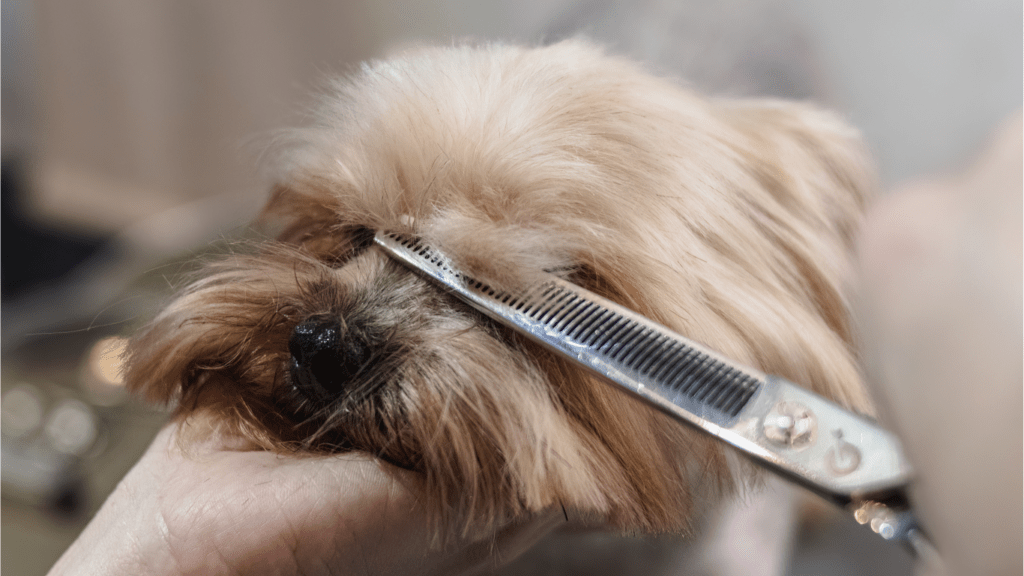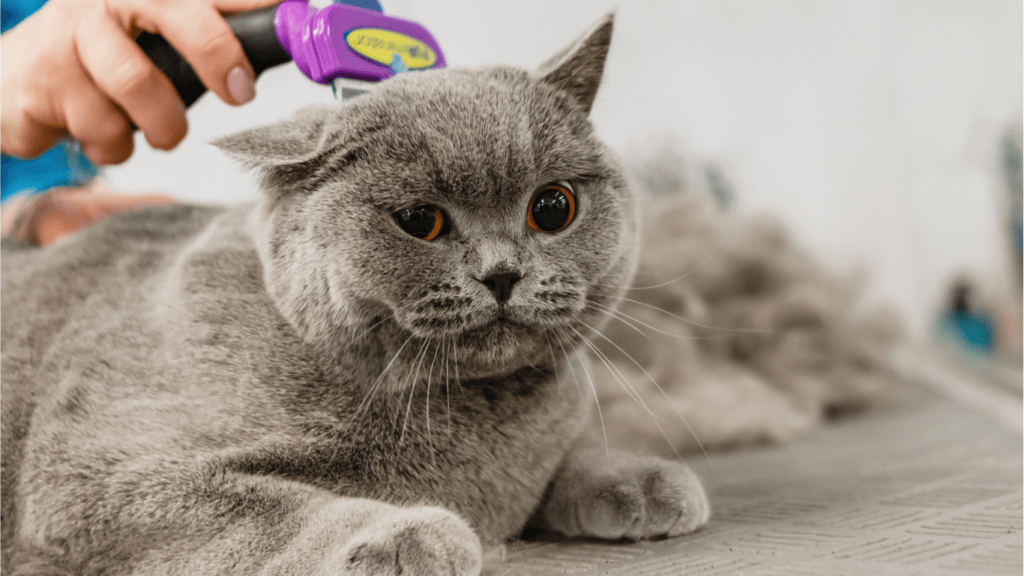Understanding the Basics of Pet Gurning
A solid foundation in pet grooming ensures pets remain healthy and comfortable. Knowing the types of pet coats and essential grooming tools helps in managing grooming routines effectively.
Types of Pet Coats
Different pets have various coat types which determine the grooming approach. Here are the common types:
- Short Coats: Pets with short hair, like Beagles, need regular brushing to remove loose hair and distribute skin oils.
- Double Coats: Breeds like Huskies have a dense undercoat and soft outer coat. They need frequent grooming to avoid matting and control shedding.
- Curly Coats: Poodles often have curly hair that requires regular clipping. Brushing prevents tangles and mats.
- Silky Coats: Breeds like Yorkshire Terriers have fine, long hair. Regular brushing keeps their coats shiny and free of tangles.
- Hairless Breeds: Cats like the Sphynx, though hairless, still need skincare routines to prevent oil buildup.
Essential Grooming Tools
Proper grooming tools make the grooming process efficient and comfortable for pets. Here are tools that should be in every pet owner’s kit:
- Brushes and Combs: Different types of brushes (slicker, bristle, pin) and combs (wide-toothed, fine-toothed) cater to various coat types.
- Clippers and Scissors: Quality clippers and grooming scissors help in trimming hair, especially for curly and silky coat breeds.
- Nail Clippers: Designed for pets, these keep nails at a safe length, preventing health issues.
- Ear Cleaners: Solutions and wipes clean ears, reducing the risk of infections.
- Shampoo and Conditioner: Specific formulas exist for different coat types and skin conditions, ensuring pets’ skin and fur remain healthy.
Understanding these basics enables more effective and enjoyable grooming sessions, contributing to pets’ overall well-being.
Step-by-Step Grooming Techniques
Grooming techniques help maintain your pet’s coat and overall health. Follow these steps to keep your pet looking and feeling their best through regular brushing, combing, and bathing.
Brushing and Combing
Start by identifying the right brush and comb for your pet’s coat type. Use a slicker brush for curly coats, a bristle brush for short-haired pets, and an undercoat rake for double coats.
- Detangle Knots: First, remove any tangles using a detangling spray and fingers. For stubborn knots, gently work through them with a wide-toothed comb.
- Whole Body Brushing: Begin at the head and move down to the tail, ensuring you brush in the direction of hair growth. This distributes natural oils, keeping the coat shiny and healthy.
- Combing: After brushing, use a comb to remove any remaining loose hairs. Pay special attention to areas prone to matting, such as behind the ears, under the legs, and around the neck.
- Regular Maintenance: Brush and comb your pet regularly. Long-haired breeds may need daily grooming, while short-haired breeds can benefit from weekly sessions.
Bathing Procedures
Consistent bathing keeps your pet’s skin and coat clean and healthy. Choose a pet-specific shampoo to avoid irritating their skin.
- Preparation: Gather supplies, including a pet-friendly shampoo, conditioner, towels, and a non-slip mat. Brush your pet to remove loose fur and mats before the bath.
- Water Temperature: Fill the tub with lukewarm water. Ensure the water is not too hot or cold to keep your pet comfortable.
- Wetting and Shampooing: Wet your pet thoroughly, avoiding their ears and eyes. Apply shampoo and lather well, starting from the neck and working down to the tail.
- Rinsing: Rinse your pet thoroughly to remove all shampoo residues. Leftover shampoo can cause skin irritation, so ensure no product remains.
- Conditioning: Apply a pet conditioner if needed, then rinse thoroughly. Conditioning helps keep the coat soft and manageable.
- Drying: Towel dry your pet to remove excess water, then use a blow dryer on a low heat setting if your pet tolerates it. Ensure your pet is completely dry to prevent skin issues.
Regularly adhere to these steps to ensure your pet’s coat remains in top condition, contributing to their overall comfort and health.
Special Care for Different Pets

Providing special care tailored to each pet’s unique needs is essential in grooming. Each pet species has specific requirements to maintain optimal health and comfort.
Dogs: Breed-Specific Tips
Dogs need grooming routines that cater to their breed characteristics. Long-haired breeds like Shih Tzus and Collies need daily brushing to prevent matting and tangles.
Short-haired breeds like Beagles and Boxers need less frequent brushing, typically once a week, using a bristle or rubber brush to remove loose hair. Double-coated breeds like Huskies and German Shepherds experience seasonal shedding, requiring more intensive grooming during these periods.
Bathing frequency varies by breed and activity level. Some dogs, like Poodles, which have curly coats, need regular bathing every 3-4 weeks, while others, like Bulldogs with skin folds, might need frequent cleaning to prevent infections. Using breed-appropriate shampoos and conditioners helps maintain coat and skin health.
Cats: Managing Matting and More
Cats are generally self-groomers, but they still need human assistance with certain aspects. Long-haired breeds like Persians and Maine Coons are prone to matting, making daily brushing essential.
Short-haired cats like Siamese and American Shorthairs benefit from weekly brushing to reduce shedding and hairballs.
Matting can lead to skin issues if left untreated. To manage matting, use a wide-toothed comb or a mat splitter specifically designed for cats. Additionally, pay attention to their nails and dental hygiene. Regularly trimming nails and providing appropriate dental care can prevent potential health issues.
Cats’ sensitive skin requires careful product selection. Use cat-specific grooming products to avoid skin irritations and allergic reactions. Regular grooming helps keep your cat healthy and comfortable, reducing the risk of health complications.
Additional Pet Grooming Needs
Pet grooming involves more than just brushing and bathing. Several additional tasks ensure pets stay healthy and comfortable.
Nail Trimming
Nail trimming prevents overgrown nails, which can cause pain or infection. Clip your pet’s nails every 3-4 weeks. Use pet-specific nail clippers and ensure you don’t cut into the quick, a sensitive area within the nail.
To make this easier, hold your pet’s paw firmly but gently, trim a small portion of the nail, and repeat. For darker nails without visible quicks, trim cautiously in small increments.
Ear and Eye Care
Proper ear and eye care help prevent infections and other issues. Clean your pet’s ears weekly using a pet-specific ear cleaner and cotton balls. Gently wipe the ear canal, avoiding deep cleaning to prevent damage.
For eye care, check for debris or discharge daily. Use a damp, soft cloth to wipe away any gunk from the corner of your pet’s eyes. Consult your vet if you notice persistent redness or discharge.


